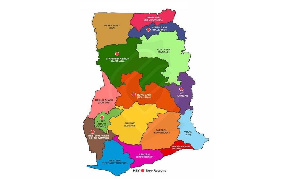- Home - News
- Polls
- Year In Review
- News Archive
- Crime & Punishment
- Politics
- Regional
- Editorial
- Health
- Ghanaians Abroad
- Tabloid
- Africa
- Religion
- Election 2020
- Coronavirus
- Photo Archives
- News Headlines
- Press Release
Regional News of Thursday, 23 November 2023
Source: starrfm.com.gh
Over 50% of persons in 23 districts multidimensionally poor – GSS
The Ghana Statistical Service (GSS) has revealed that some 23 districts in the country have over 50% of their population multidimensionally poor.
In a latest release of a Multidimensional Poverty Index Scorecard for all 261 Administrative Districts, the GSS discloses Multidimensional poverty is highest in the Nabdam District in the Upper East Region with a prevalence of 68.6%, which is about 11 times higher than the lowest recorded of 6.3% in the Asokwa Municipality in the Ashanti Region.
The Statistical Service further adds, the incidence of multidimensional poverty in the 23 districts higher than 50 percent is more than twice the national rate of 24.3 percent.
Additionally, in 55 of the districts with both rural and urban residential settlements, there is at least a 20.0 percentage point difference in the incidence of multidimensional poverty with the highest disparity in Kwahu Afram Plains North (38 percentage points).
Also, multidimensional poverty is higher for female headed households compared to male-headed households in nine out of every 10 districts.
The statistical service has attributed the principal contributors to multidimensional poverty across districts as employment (206 districts) and insurance coverage (55 districts). Employment it says contributes between 22.9 percent and 56.7 percent across the 206 districts, while insurance coverage contributes between 23.5 percent and 29.7 percent across the 55 districts.
Meanwhile, Government statistician, Prof. Samuel Kobina Anim has warns the results points to a potential miss of the SDG goal 1 that seeks to reduce to half, the number of people living in poverty.











